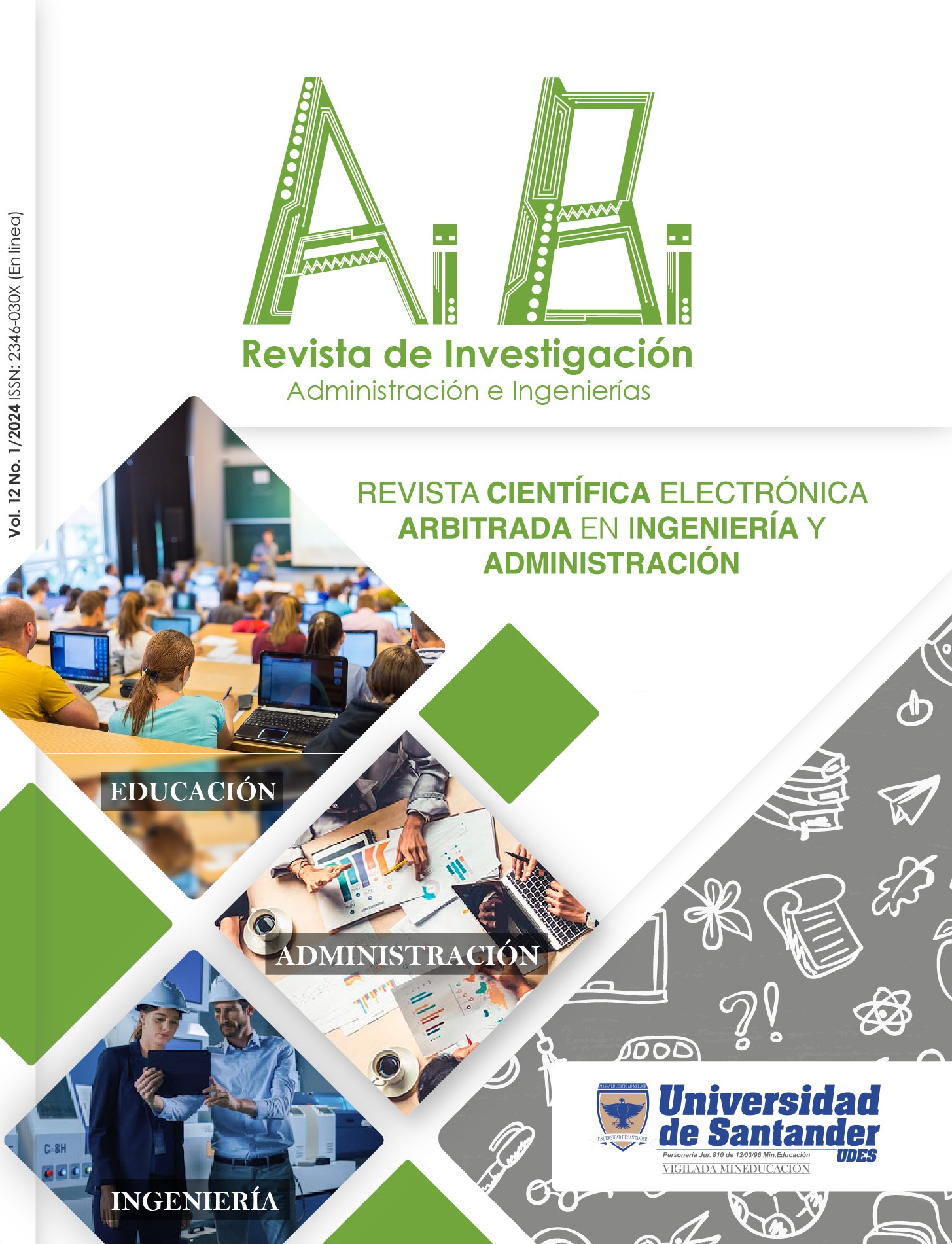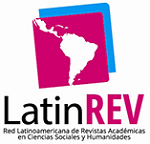Evaluación de la calidad de la imagen facial para la mejora del sistema de reconocimiento con aprendizaje automático
DOI:
https://doi.org/10.15649/2346030X.3461Palabras clave:
rostro, redes neuronales, aprendizaje automáticoResumen
Marco de evaluación de la calidad de la imagen facial (FIQA) para mejorar la precisión del reconocimiento. Evalúa la calidad de la imagen utilizando varios factores y los combina para clasificar el índice de calidad del rostro. La técnica se evalúa en el conjunto de datos Color-Feret, superando a los métodos existentes con una fuerte correlación (0,95) entre las puntuaciones del sistema y las humanas.
Referencias
D. Agarwal and A. Bansal, “Assessment of latent fingerprint image quality based on level 1, level 2, and texture features,” in International Conference on Innovative Computing and Communications: Proceedings of ICICC 2020, Volume 1, Singapore, 2021.
A. Abaza et al., “Design and evaluation of photometric image quality measures for effective face recognition,” IET Biometrics, 3(4), pp. 314-324, 2014.
R. L. Hsu et al., “Quality assessment of facial images,” in Biometrics Symposium: Special Session on Research at the Biometric Consortium Conference, IEEE, pp.1-6, 2006.
D. Bhattacharjee et al., “No-reference image quality assessment for facial images,” in Advanced Intelligent Computing Theories and Applications, with Aspects of Artificial Intelligence: 7th International Conference, ICIC 2011, Zhengzhou, China, August 11-14, pp. 594-601, 2011.
Y. Wong et al., “Patch-based probabilistic image quality assessment for face selection and improved video-based face recognition,” in CVPR 2011 WORKSHOPS, IEEE, pp. 74-81, 2011.
J. Zuo and N.A. Schmid, “Adaptive quality-based performance prediction and boosting for iris authentication: methodology and its illustration,” IEEE transactions on information forensics and security, 8(6), pp. 1051-1060, 2013.
J. Merkle et al., “Towards improving the NIST fingerprint image quality (NFIQ) algorithm,” 2010.
J. Sang et al., “Face image quality evaluation for ISO/IEC standards 19794-5 and 29794-5,” in Advances in Biometrics: Third International Conference, ICB 2009, Alghero, Italy, Proceedings 3, pp. 229-238, June 2-5, 2009.
H.R. Sheikh et al., “An information fidelity criterion for image quality assessment using natural scene statistics,” IEEE Transactions on image processing, 14(12), pp. 2117-2128, 2005.
Z. Wang et al., “Image quality assessment: from error visibility to structural similarity,” IEEE transactions on image processing, 13(4), pp. 600-612, 2004.
L. Zhang et al., “Fsim: A feature similarity index for image quality assessment,” IEEE Trans. Image Process., 20 (8), pp. 2378–2386, 2011.
K. Gu et al., “Analysis of distortion distribution for pooling in image quality prediction,” IEEE Trans. Broadcasting, 62 (2), pp. 446–456, 2016.
X. Lv and Z.J. Wang, “Reduced-reference image quality assessment based on perceptual image hashing reduced-reference image quality assessment based on perceptual image hashing,” in: Proceedings of the 16th IEEE International Conference on Image Processing (ICIP), pp. 4361–4364, 2009.
Q. Li and Z. Wang, “Reduced-reference image quality assessment using divisive normalization- based image representation,” IEEE J. Sel. Topics Signal Process. 3 (2), pp. 202–211, 2009.
M. Saad et al., “Blind image quality assessment: a natural scene statistics approach in the DCT domain,” IEEE Trans. Image Process. 21 (8), pp. 3339–3352, 2012.
A. K. Moorthy et al., “Blind image quality assessment: from natural scene statistics to perceptual quality,” IEEE Trans. Image Process. 20 (12), pp. 3350–3364, 2011.
P. Ye et al., “Unsupervised feature learning framework for no- reference image quality assessment,” in: Proceedings of the IEEE Conference on Computer Vision and Pattern Recognition (CVPR), pp. 1098–1105, 2012.
Mittal et al., “No-reference image quality assessment in the spatial domain,” IEEE Trans. Image Process. 21 (12), pp. 4695–4708, 2012.
L. Kang and P. Ye, “Convolutional neutral networks for no-reference image quality assessment,” in: Proceedings of the IEEE Conference on Computer Vision and Pattern Recognition (CVPR), pp. 1733–1740, 2014.
L. V. Hsu et al., “Quality assessment of facial images,” in Proc. Biometrics Symp., Special Issue Res. Biometric Consortium Conf., pp. 1–6, Sep./Aug. 2006.
Nasrollahi et al., “Face quality assessment system in video sequences,” in: Proceedings of the Biometrics and Identity Management, First European Work-shop (BIOID), pp. 10–18, 2008.
Y. Wong et al., “Patch-based probabilistic image quality assessment for face selection and improved video-based face recognition,” Proc. SPIE - Int. Soc. Opt. Eng. 7255: pp. 74–81, 2011.
G. Aggarwal et al., “Predicting performance of face recognition systems: An image characterization approach,” in Proc. IEEE CVPRW, pp. 52–59, Jun. 2011.
P. J. Phillips et al., “On the existence of face quality measures,” in Proc. IEEE Conf. Biometrics, Theory, Appl. Syst. (BTAS), pp. 1–8, Sep./Oct. 2013.
R. Veldhuis Dutta and L. Spreeuwers, “A Bayesian model for predicting face recognition performance using image quality,” in Proc. IEEE Int. Joint Conf. Biometrics (IJCB), pp. 1–8, Sep./Oct. 2014.
Vignesh, S. et al., “Face image quality assessment for face selection in surveillance video using convolutional neural networks,” in IEEE Global Conference on Signal and Information Processing (Global SIP), pp. 577-581, 2015.
P. Choudhary and P. Pathak, “A review of convolution neural network used in various applications,” in 5th international conference on information systems and computer networks (ISCON), IEEE, pp. 1-5, 2021.
H.-I. Kim et al., “Face image assessment learned with objective and relative face image qualities for improved face recognition,” in Proc. IEEE Int. Conf. Image Process. (ICIP), pp. 4027–4031, Sep. 2015.
N. Zhuang et al., “Recognition oriented facial image quality assessment via deep convolutional neural network,” Neurocomputing, 358, pp. 109-118, 2019.
S. Bharadwaj et al., “Can holistic representations be used for face biometric quality assessment?” in Proc. IEEE Int. Conf. Image Process. (ICIP), pp. 2792–2796, Sep. 2013.
C. Chen Dantcheva and A. Ross, “Can facial cosmetics affect the matching accuracy of face recognition systems?” in Proc. IEEE Int. Conf. Biometrics Theory Appl. Syst. (BTAS), pp. 391–398, 2012.
A. Dantcheva Chen and A. Ross, “Impact of facial cosmetics on automatic gender and age estimation algorithms,” in Proc. Int. Conf. Comput. Vis. Theory Appl. (VISAPP), vol. 2, pp. 182–190, 2014.
Rathgeb et al., “Impact and detection of facial beautification in face recognition: An overview,” IEEE Access, vol.7, pp. 152667–152678, 2019.
M. Ibsen et al., “Impact of facial tattoos and paintings on face recognition systems,” IET Biometrics, vol. 10, pp. 706–719, Apr. 2021.
Masks4All., “What countries require masks in public or recommend masks?” 2020.
S. Su et al., “Going the extra mile in face image quality assessment: A novel database and model,” arXiv preprint arXiv:2207.04904, 2022.
D. Cho Jo et al., “Ifqa: Interpretable face quality assessment,” in Proceedings of the IEEE/CVF Winter Conference on Applications of Computer Vision, pp. 3444–3453, 2023.
P. Phillips et al., “The feret evaluation methodology for face algorithms,” IEEE Trans. Pattern Anal. Mach. Intell. 22, pp. 1090–1104, 2000.
R. Min et al., “Kinectfacedb: a Kinect database for face recognition,” IEEE Trans. Syst. Man Cybern.: Syst. 44 (11), pp. 1534–1548, 2014.
J. Sang et al., “Face image quality evaluation for ISO/IEC standards 19794–5 and 29794–5,” in Int. Conf. on Biometrics (ICB), Sassari, Italy, 2009.
X. Gao et al., “Standardization face image sample quality,” in Int. Conf. on Biometrics (ICB), Seoul, Korea, 2007.
A. Mishra et al., “A robust approach for palmprint biometric recognition,” International Journal of Biometrics, 11(4), pp. 389-408, 2019.
S. Bezryadin et al., “Brightness calculation in digital image processing,” in International symposium on technologies for digital photo fulfillment, Vol. 1, pp. 10-15, 2007.
P. T. Yap and P. Raveendran., “Image focus measure based on Chebyshev moments,” IEEE Proceedings-Vision, Image, and Signal Processing, 151(2), pp. 128-136, 2004.
K. Kryszczuk and A. Drygajlo, “On combining evidence for reliability estimation in face verification,” in 14th European Signal Processing Conference, IEEE, pp. 1-5, 2006.
M. Abdel-Mottaleb and M.H. Mahoor., “Application notes-algorithms for assessing the quality of facial images,” Computational Intelligence Magazine, IEEE, 2(2), pp. 10-17, 2007.
X. Chen et al., “No-reference color image quality assessment: From entropy to perceptual quality,” EURASIP Journal on Image and Video Processing, pp. 1-14, 2019.
P. Pathak and P. Choudhary, “A Comprehensive Review of Various Machine Learning Techniques,” Explainable Machine Learning Models and Architectures, pp. 1-10, 2023.
L. Cheng and T. Yu., “A new generation of AI: A review and perspective on machine learning technologies applied to smart energy and electric power systems,” International Journal of Energy Research, 43(6), pp. 1928-1973, 2019.
J. Yang et al., “Information extraction from electronic medical records using multitask recurrent neural network with contextual word embedding,” Applied Sciences, 9(18), 3658, 2019.
J. C. Dunn, “A fuzzy relative of the ISODATA process and its use in detecting compact well-separated clusters,” 1973.
B. J. Frey and D. Dueck, “Clustering by passing messages between data points,” Science, vol. 315(5814), pp. 972-976, 2007.
K. Nezamabadi et al., “Unsupervised ECG analysis: A review,” Reviews in Biomedical Engineering, IEEE, 16, pp. 208-224, 2022.
M. Hahsler et al., “dbscan: Fast density-based clustering with R,” Journal of Statistical Software, 91, pp. 1-30, 2019.
P.C. Yuen and J. H. Lai, “Face representation using independent component analysis,” Pattern recognition, 35(6), pp. 1247-1257, 2002.
Y. Zhao, “Theories and applications of LBP: a survey,” in Advanced Intelligent Computing Theories and Applications,” With Aspects of Artificial Intelligence: 7th International Conference, ICIC 2011, Zhengzhou, China, Revised Selected Papers 7, pp. 112-120, August 11-14, 2011.
F. Solina et al., Color-based face detection in the "15 seconds of fame" art installation, 2003.
Descargas
Publicado
Cómo citar
Descargas
Número
Sección
Licencia
Derechos de autor 2024 AiBi Revista de Investigación, Administración e Ingeniería

Esta obra está bajo una licencia internacional Creative Commons Atribución 4.0.
La revista ofrece acceso abierto bajo una Licencia Creative Commons Attibution License

Esta obra está bajo una licencia Creative Commons Attribution (CC BY 4.0).









